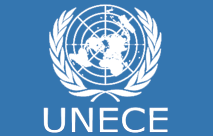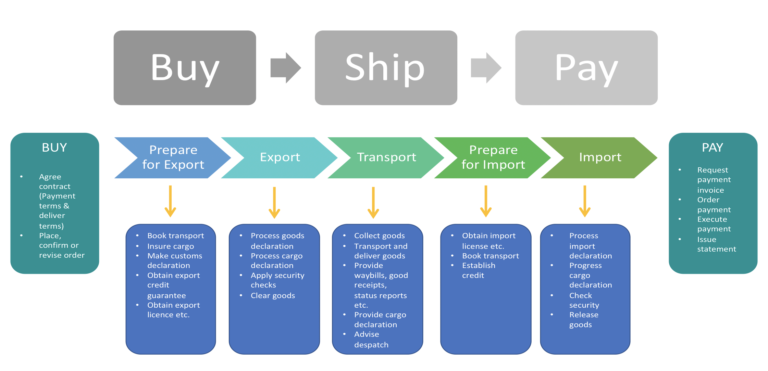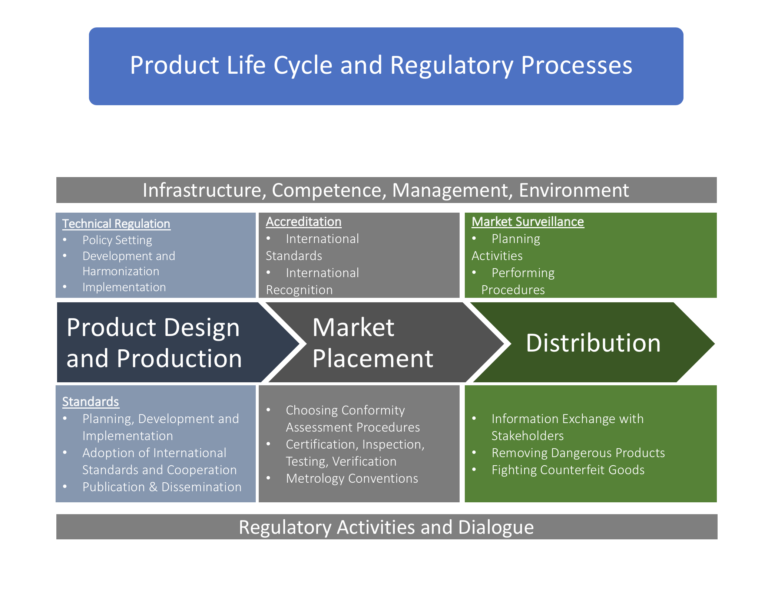Analytical Parameters
The assessments are based on comprehensive evaluation methodology, focused on: (i) trade facilitation measures; (ii) quality control systems embodied in standardization policies, technical regulations, quality assurance, accreditation and metrology; and (iii) trade-related infrastructure, including transport and logistics
The UNECE Buy/Ship/Pay (BSP) Model
The words “UNECE BSP” that appears in the text in red should be hyper linked to a separate page ). Below is the text
The analysis of trade facilitation conditions is based on the ECE Buy-Ship-Pay (BSP) reference model, which provides a system-based conceptualization of international trade transactions. These transactions are treated as proceeding along a single continuous process, which spreads across the three main operations carried out by traders:
- BUY – the conclusion of trade terms and the establishment of sales contract.
- SHIP –physical transfer of the goods, including regulatory procedures related to official controls;
- PAY –payment transactions (the claim for the payment in the case of exports, and the payment for the purchased goods in the case of imports).
As shown in in the below figure (attached separately in PPT format) , the business processes are seen as a chain of logically sequenced activities to establish commercial contracts (commercial procedures); arrange for the inland and cross-border transportation of goods (transport procedures); complete export and import formalities (regulatory procedures); and secure payments (financial procedures).
Product Life-Cycle
To take the analysis a step further, the assessments use the product life cycle approach to ascertain capacity shortfalls within the national standardization policies, technical regulations, quality assurance, accreditation and metrology system. As shown in the below figure (attached separately in PPT form ), regulations and institutions are assessed in terms of their impact on product design, its placement on the market and eventual distribution.
Both the decision-making and implementation levels are analysed, looking into the quality of SQAM infrastructure (i.e. testing laboratories), levels of expertise and knowledge of officials (competence), management methodologies, and the overall regulatory environment.
Business Process Analysis
The insights emerging from the actor-oriented questionnaires are complemented by a sector-focused assessment of regulatory and procedural barriers to trade, using the ECE/ESCAP Business Process Analysis (BPA) methodology.[1]The methodology applies the Unified Modelling Language, which uses internationally recognized standard graphical notations for mapping the day-to-day activities carried out under the BSP categories. The aim is to capture:
- Quantitative (time/money) and qualitative impacts of regulatory and procedural barriers;
- Shortfalls in transport and logistical services;
- Shortcomings in the country’s SQAM system;
- Shortfalls in public-private sector consultative mechanisms;
- Key policy issues with direct bearing on the traders’ performance;
- Alternative options for addressing the identified regulatory and procedural barriers;
- Capacity-building needs of State agencies, traders, the transport sector, and logistics service providers.
The results of the BPA could serve as a basis for the:
- Analysis of data requirements and data flow;
- Development of standardized data;
- Design of improved export processes;
- Design of a prototype single window entry form;
- Design of a prototype single window entry system;
- Decisions on infrastructure and logistics services development;
- Design of appropriate laws and market support institutions
[1] The latest version of the joint ECE/ESCAP Business Process Analysis Model (2012) is available online at: www.unescap.org/unnext/tools/business_process.asp.


